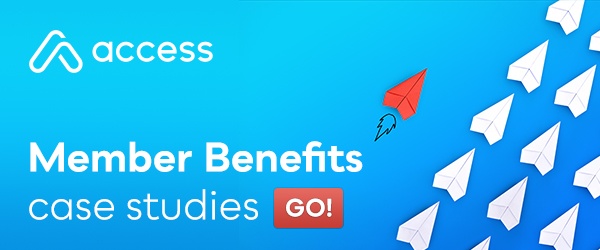The Secret to Successful Onboarding: All the Essentials, Only the Essentials
Last week, we discussed the importance of a great onboarding effort in the article “What is Onboarding? The Next Critical Step in Your Loyalty Program.” And now in the article below we’ll show you some techniques for making your onboarding efforts great.
As a Cub Scout leader, I recently coached a group of 8-year-old boys on how to prepare for a 1-mile hike. I asked them to name some items they would need to bring with them. And because they are 8-year-old boys, they kind of stared off into the distance as I listed the essentials like water, a first aid kit, proper footwear, etc.
Then I asked them what items they shouldn’t bring on a hike. And because they are 8-year-old boys, they talked over each other to name about a hundred ridiculous things like a piece of glass, 5 million empty bags, a spider web, and the giant stuffed lion one had won at a fair.
As silly as the exercise became, they’re not wrong. It would be just as hard to hike without water as it would be try and lug an 8 foot stuffed lion up a mountain. Both extremes are likely to keep you from your goal.
And yet when it comes to member onboarding, it seems many companies either do too much or too little. Neither extreme will help a company maximize retention efforts the way they want to. For businesses offering member perks, loyalty programs, membership discount programs and other offerings where retention is critical, now is the time to decide if your onboarding efforts find the right balance.
It’s important to discern what essentials need to happen right at the beginning and what can wait until later.
Know Your Essential Actions and How to Get Members to Take Them
Can you name one thing your members will need to do to get the most out of your product or service? In other words, if a member interacts with your brand and doesn’t do this one thing, they will be more likely to simply lose interest and wander away than those who do. It’s an action totally unique to your business.
That’s where great onboarding begins.
The onboarding process is the perfect time to encourage people to establish the right kind of relationship you want by rewarding the actions you want them to take. This may take some research to find. You’ll need to dig through your retention data to find the commonalities between your long-term members. What is something they all accomplished, proving it to be a precursor to success?
If you discover that your essential action looks like this…
To fully engage in my restaurant’s reward program, members must try our dessert.
…then your onboarding sequence could include a coupon for a free dessert with entrée purchase so members are sure to sample your specialty and return for more.
If your essential action looks like this…
To fully enjoy my loyalty program, members must sign up for my email list.
…then your onboarding could include prompts to join the mailing list, with promises of value delivered right to their inbox.
If your essential action looks like this…
To fully enjoy my members-only app, members must use a specific feature the first time they open it.
…then your onboarding could point them immediately to that crucial feature and allow them to discover the rest of the app at their leisure.
 When you guide your new members to the most essential tasks, you help them cut through the noise and confusion, and hone in on the real value of your offering. Once they see the value, they’re more likely to be yours for a very long time.
When you guide your new members to the most essential tasks, you help them cut through the noise and confusion, and hone in on the real value of your offering. Once they see the value, they’re more likely to be yours for a very long time.
It may feel like the wrong move to de-emphasize other important actions – after all, to you everything may feel equally important. Just remember that once the member is in it for the long haul, they’ll have plenty of time to learn everything there is to learn about your membership benefits. But trying to tell the entire story all at once is more likely to have the opposite effect: overwhelming the member and chasing them away.
Communication is Essential – But So Is Personalization
In order to guide your members to the actions you want them to take, you need clear communication from the start. Organizations have a lot of options to choose from like self-serve or guided tutorials, welcome and follow-up emails, links to social media to connect with other members, etc.
Members do best when they have options from which they can choose their own preference. Some prefer to basically onboard themselves as long as there are clear instructions available. Other members will need a little hand holding to help them through their questions.
At the beginning you want to eliminate friction, anything that keeps the member from having a smooth journey. Bryce Benson, senior director of client success and onboarding at Access Development, keeps track of common questions and sticking points his contacts encounter. He and the onboarding team then work to fix issues and develop answers to common questions available before they occur, smoothing the ride for all future clients.
And it shouldn’t stop there. Clear communication should continue through the member’s entire journey. It’s a sad fact that many associations only reach out to members when it is time for them to renew. Should it be any surprise then, when a member hasn’t seen enough value to pay for another year?
Demand Only Essential Data – Everything Else Can (and Should) Wait
You probably need the member’s email address to be able to keep in contact with them. But do you really need to know their age, ethnicity and cheesecake preference right from the start?
The last thing you want is to lose all opportunity to impress because people abandon in the middle of a marathon enrollment. And they will too. This report shows that 34% of Millennials and 28% of Gen Zers won’t join a loyalty program simply because the enrollment process is too long.
Onboarding is all about showing them what you can do for them, not about what they can give you. The rest can come after the loyalty.
Essentials for a Good First Impression: Immediate Value and Communication
When Bryce Benson became Access’ head of client success and onboarding, he was tasked with getting clients (who make up Access’ membership) up and running in the program. Since then, program setup time has shrunk by 75 percent.
“Members are never as excited about your program as they are the day they sign up,” he said. “So if you act fast, you can capitalize on that passion and set the right tone for the duration of your relationship.”
But it takes cooperation.
At Access, Bryce may be the one clients interact with, but onboarding requires the commitment of many different departments: technical support, marketing support, support from a knowledgeable customer service team and more.
To be sure, it is an effort well worth making.
Don’t Wait. It’s Essential to Up Your Onboarding Game Right Now.
The feedback around Access’ onboarding efforts and the retention data to prove them are now paying off in customer satisfaction. “Our clients are happy with the onboarding experience knowing they have the support they need and the people to turn to if they are ever at a loss,” he said.
Hopefully you're inspired to put more effort into your own onboarding efforts. Your members (and your profit margins) will thank you for it. The sooner the better.
Here are a few more articles to help you kick start your enhanced onboarding efforts now:
Topics: Customer Engagement, partnership marketing, Discount Programs, customer loyalty, Customer Success, loyalty programs, onboarding, Member Success

Written by: Kendra Lusty







.jpeg)







Share your Comment.